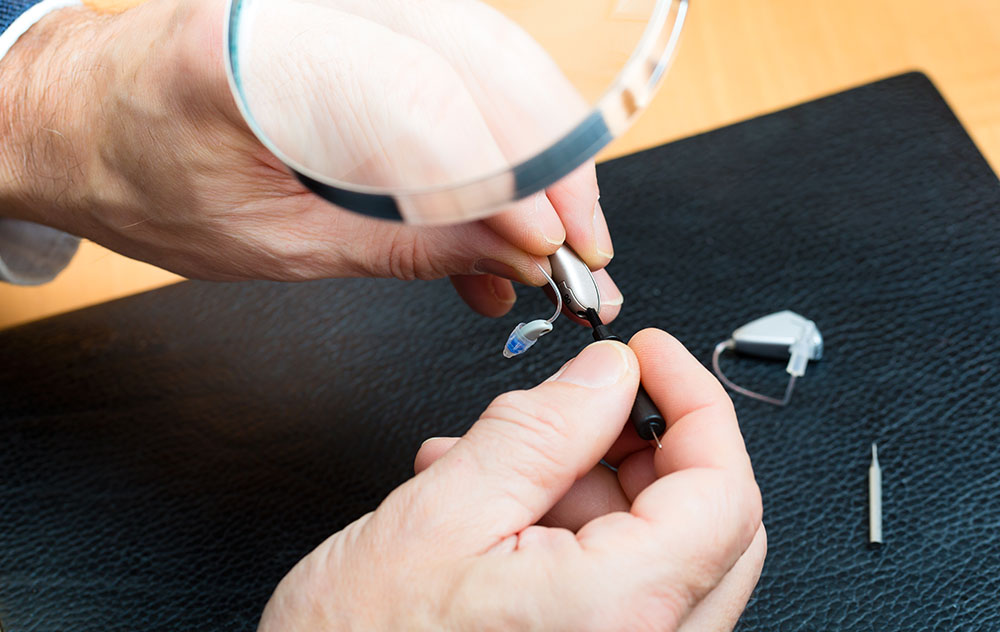
DIY Hearing Aid Repairs
Is your hearing aid acting up?
Perhaps it’s whistling or the volume isn’t loud enough. Fear not: there are often simple explanations and easy fixes. Not all issues result in costly hearing aid repairs. It’s all a matter of checking the basics and working out what can be fixed at home, and when the device needs a professional’s touch. If the at-home tips don’t do the trick then your audiologist can help.
The hearing device doesn’t work
If the hearing devices aren’t producing sound, don’t panic yet. Consider the following tips:
- Check out the power.
- Check the hearing aid’s battery. Is the battery housing door fully closed? If it won’t shut the chances are the battery is in upside down. Flip the battery over to see if that helps.
- Change the battery.
- Check the device is switched on.
- Turn up the volume. A button or dial can get knocked when the device is put in the ear or removed, so readjust the settings to check this out.
- Try switching between programs. It is easy to accidentally switch channels without realizing.
If you’ve done all that and it still doesn’t work, there’s still no need to panic.
More advanced steps for checking devices
Take a look at the earmold and tubing and give it a good cleaning. Use a tool like a multitool or wax pick to clean stubborn debris. Be especially alert for earwax ingress or condensation.
If there’s still a problem with your hearing aid, contact your audiologist for additional help. Make sure to write down all of the steps previously taken to try to fix your hearing aids.
Even when you do call the audiologist, there’s no real need to worry. The audiologist can diagnose the problem. Many times, the audiologist is able to perform the repairs. If not, he or she will be able to send your broken devices into the manufacturer for repair.
Prevention is better than cure
Modern hearing aids are delicate pieces of technology but are still hardy. With a small amount of care each night, your device should function faultlessly for years. A daily routine can be as simple as wiping away oil and debris at the end of each day, opening the battery compartment door and using a hearing device dehumidifier.
It’s important to take simple steps to protect your device from harm. Get into the habit of installing and removing your device while leaning over a soft towel. Likewise, avoid storing your hearing device in extremes of temperature or near condensation. It’s best to keep your hearing aid out of the bathroom, away from a steamy shower. Also, many a hearing aid has fallen out over a sink of water or disappeared down a plug hole, so best not to go there.
For further advice on cleaning and care, speak to your audiology clinic who will be pleased to help you.

